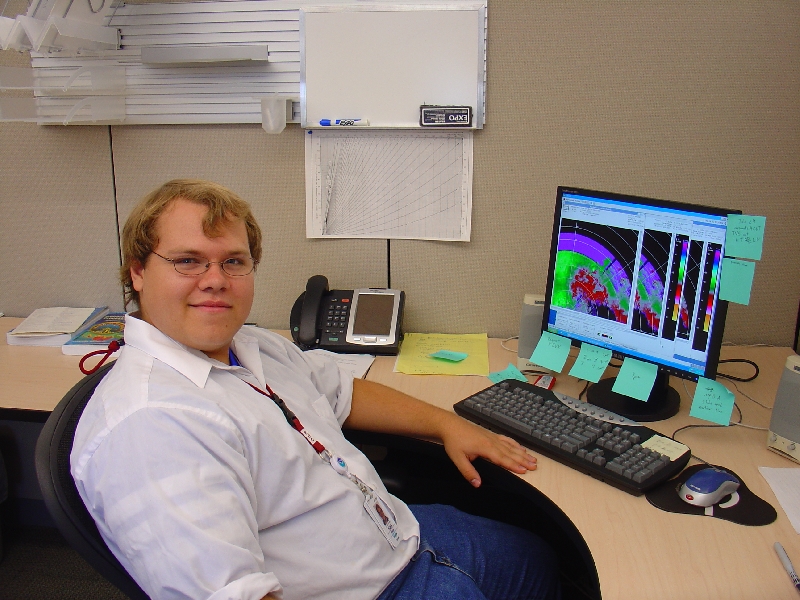May 29 - August 2

Evaluation of Faster Scanning Strategies for the WSR-88D with the Combined Range Aliasing Mitigation Techniques
Douglas Crauder and Dave Zittel
Abstract:
In a recent survey of WSR-88D sites, operational staff indicated a desire for faster volume coverage pattern (VCPs) that also mitigates range aliasing. In 2004, the Radar Operations Center (ROC) fielded a new technique call the Multiple Pulse Repetition Frequency (PRF) Dealiasing Algorithm (MPDA) that combines three sequential Doppler scans with PRFs of about 1300, 1100, 850 Hz, respectively, to mitigate range aliasing. Another technique to mitigate range aliasing, the Sachidananda-Zrnic phase coding algorithm (SZ-2), is being fielded in the summer of 2007. SZ-2, which provides the bulk of the velocity recovery, uses advanced signal processing to separate strong trip from weak trip signal. The two algorithms, when combined, recover an average of 98 percent of velocity area data out to 230 km. One major drawback with the combined technique is that a volume scan takes about five minutes forty-five seconds.
The ROC has investigated using two instead of three Doppler scans at each of the two lowest elevation angles thus reducing the volume scan time by about thirty seconds. Five data cases from the ROC's test bed WSR-88D were analyzed. Four cases with widespread precipitation were collected during the fall and winter of 2006. The fifth case, a mesoscale convective system (MCS), was collected in June 2007. This case was recorded as Recombined and Super Resolution data. Recombined and Super Resolution products are currently in development at the ROC and scheduled for release in 2008. Using two instead of three Doppler scans yields an average velocity recovery of 96.87 percent for the four widespread precipitations, 95.87 percent for the Recombined data on the MCS, and 83.83 percent for the Super Resolution data. Velocity dealiasing errors were also scored. Starting with a score of 100, points were deducted for different sized errors in the velocity field. For the widespread precipitation cases, using two instead of three Doppler scans decreased the number of errors slightly (0.045 percent decrease in errors); for the MCS, there was a 1.70 percent increase in errors for the Recombined data and a 2.34 percent increase for the Super Resolution data. These initial results support operationally fielding the combined algorithms with the middle (1100 Hz PRF) scan removed thus helping to meet the needs of radar sites. These would be deployed in the form of two new VCPs called 112 and 122.